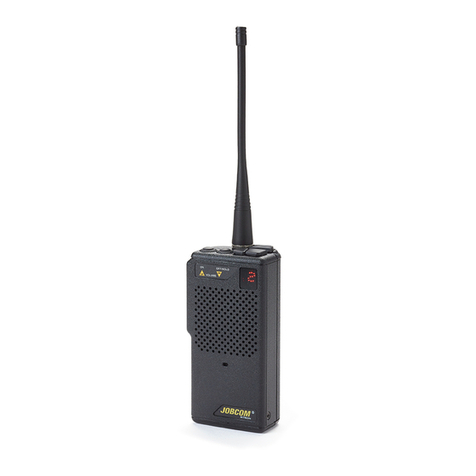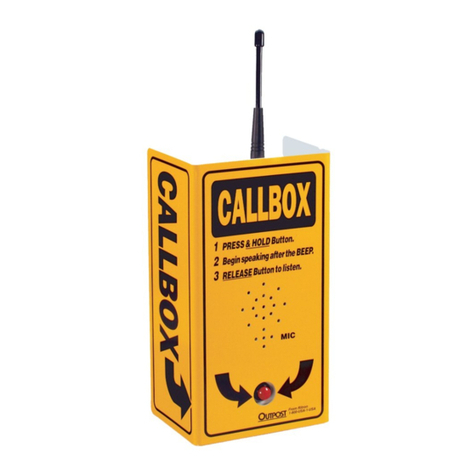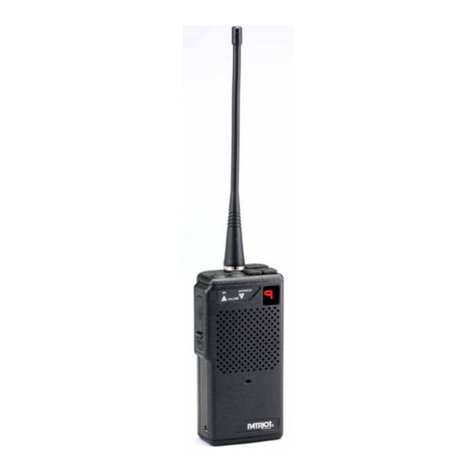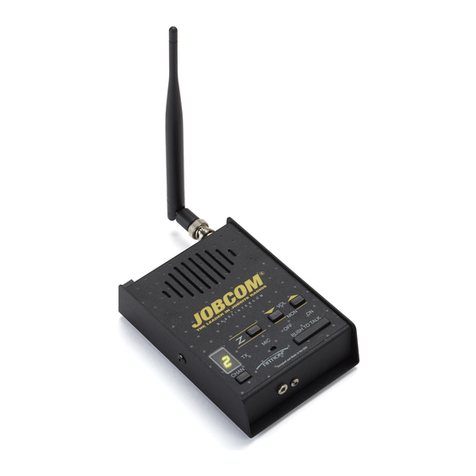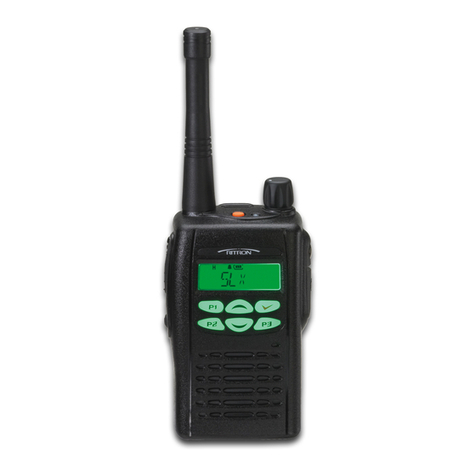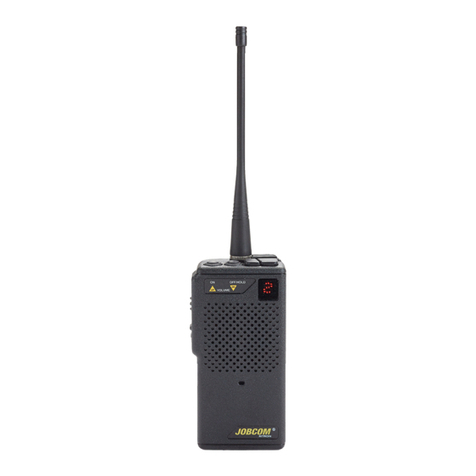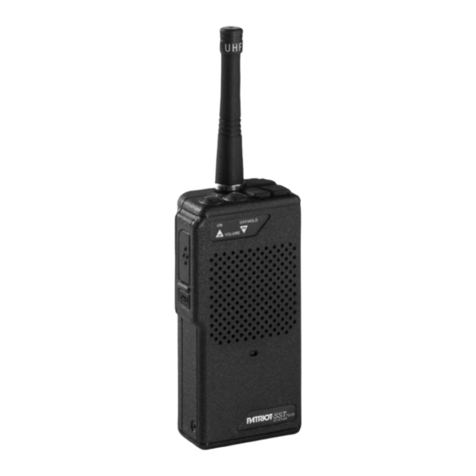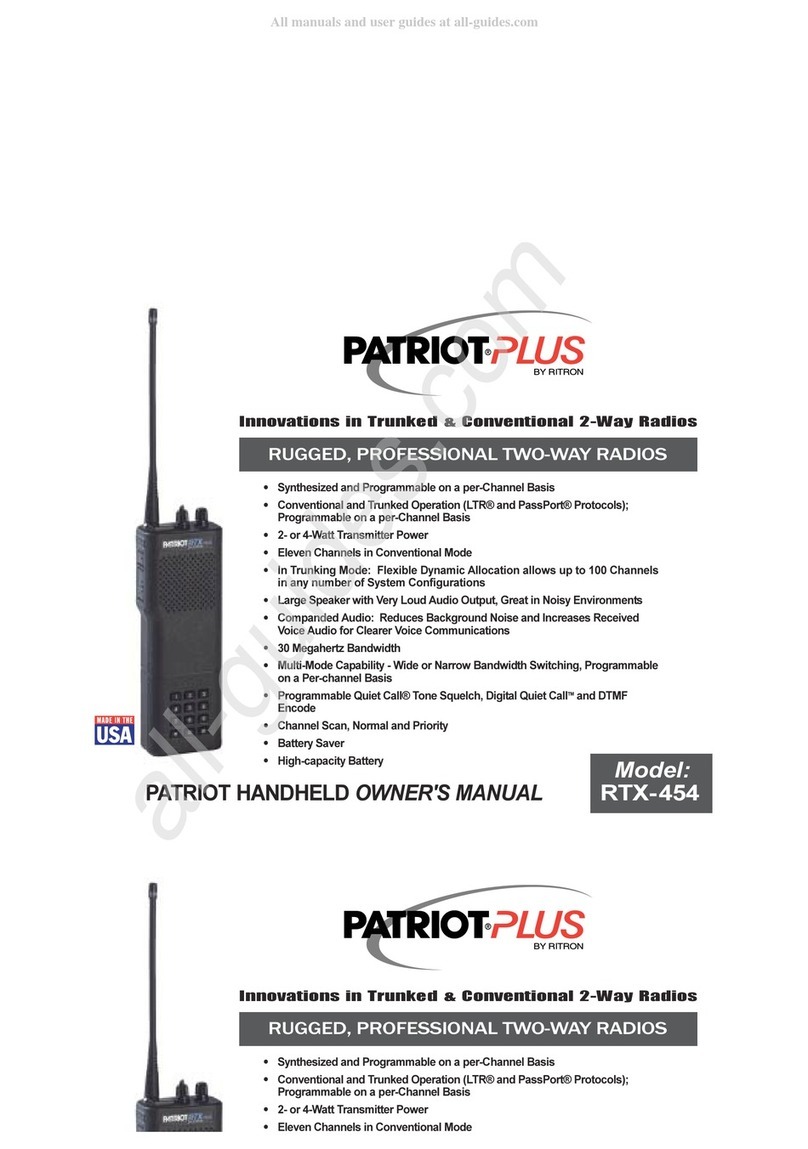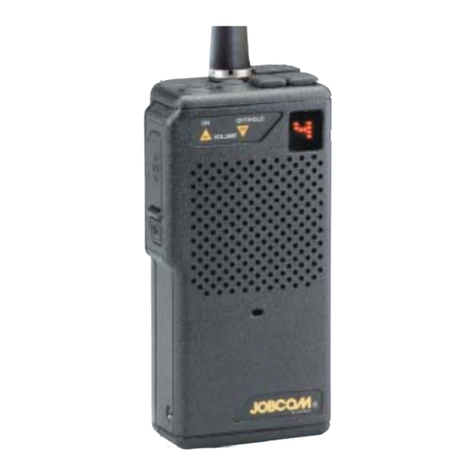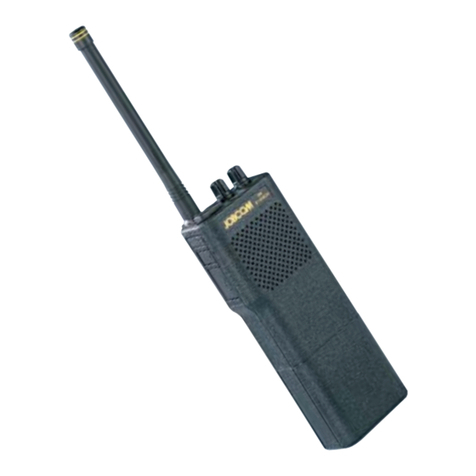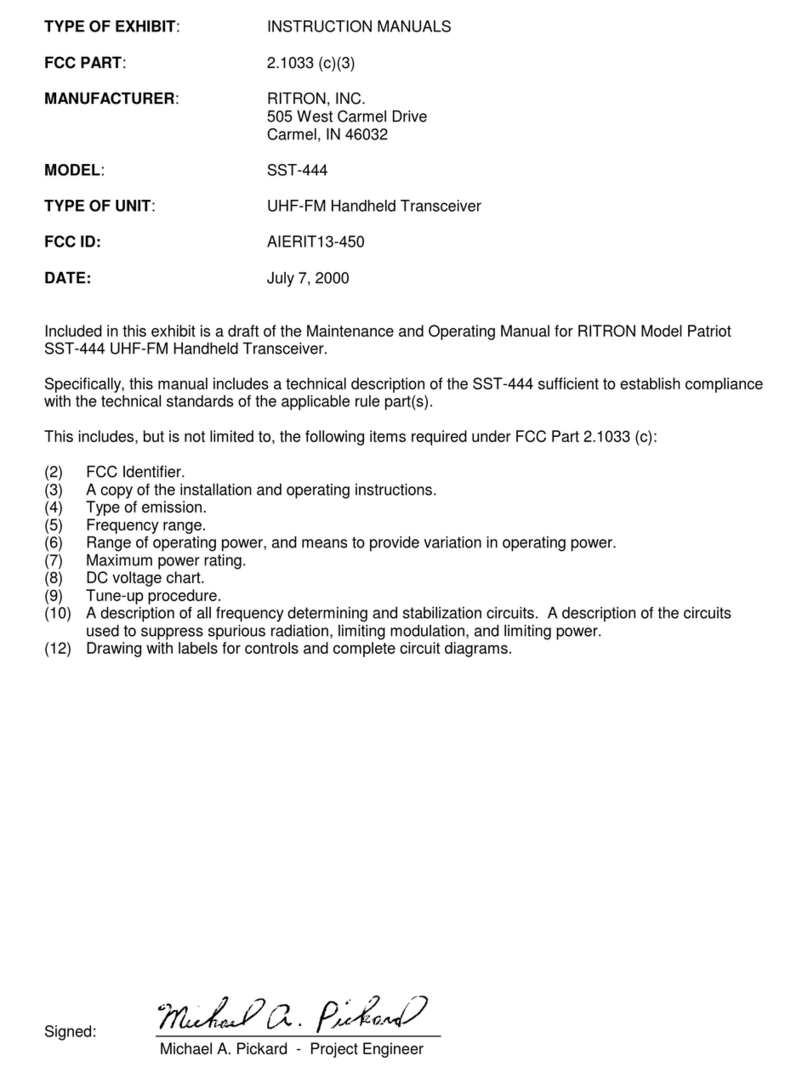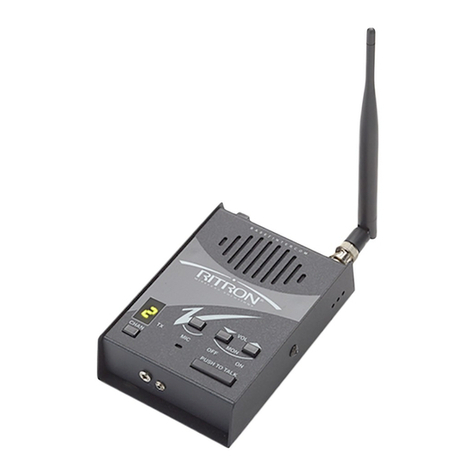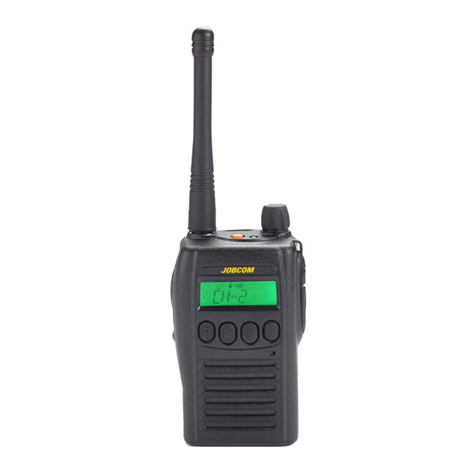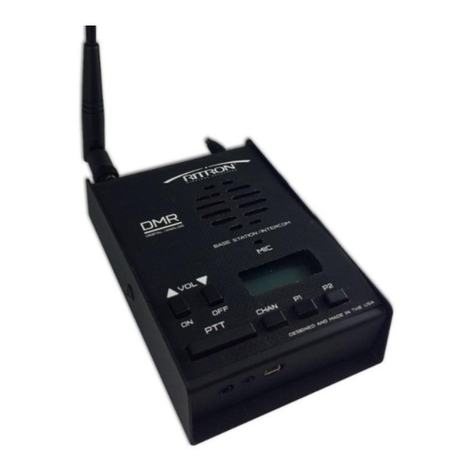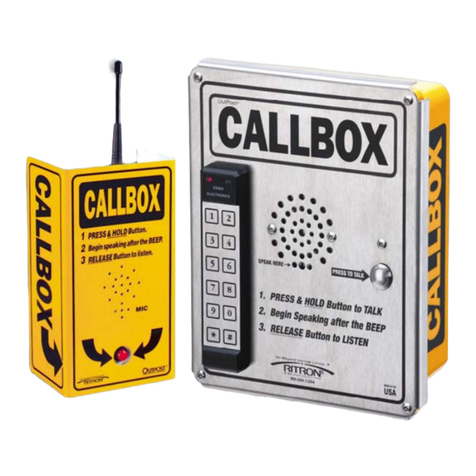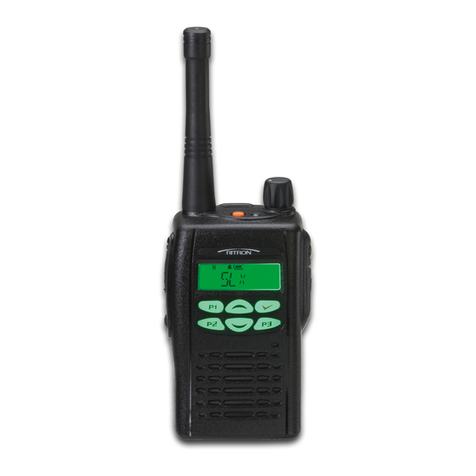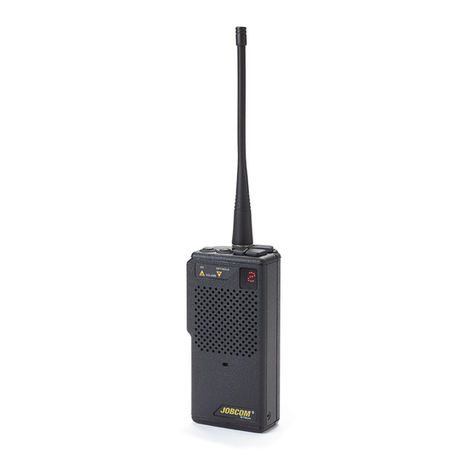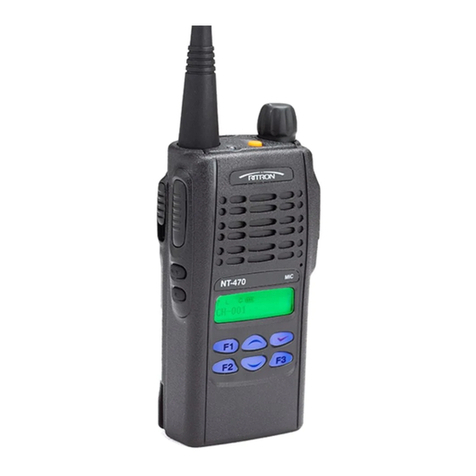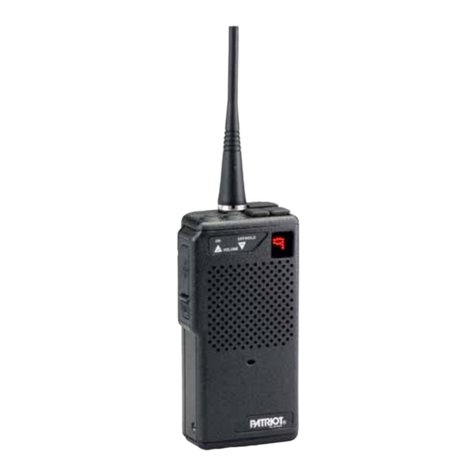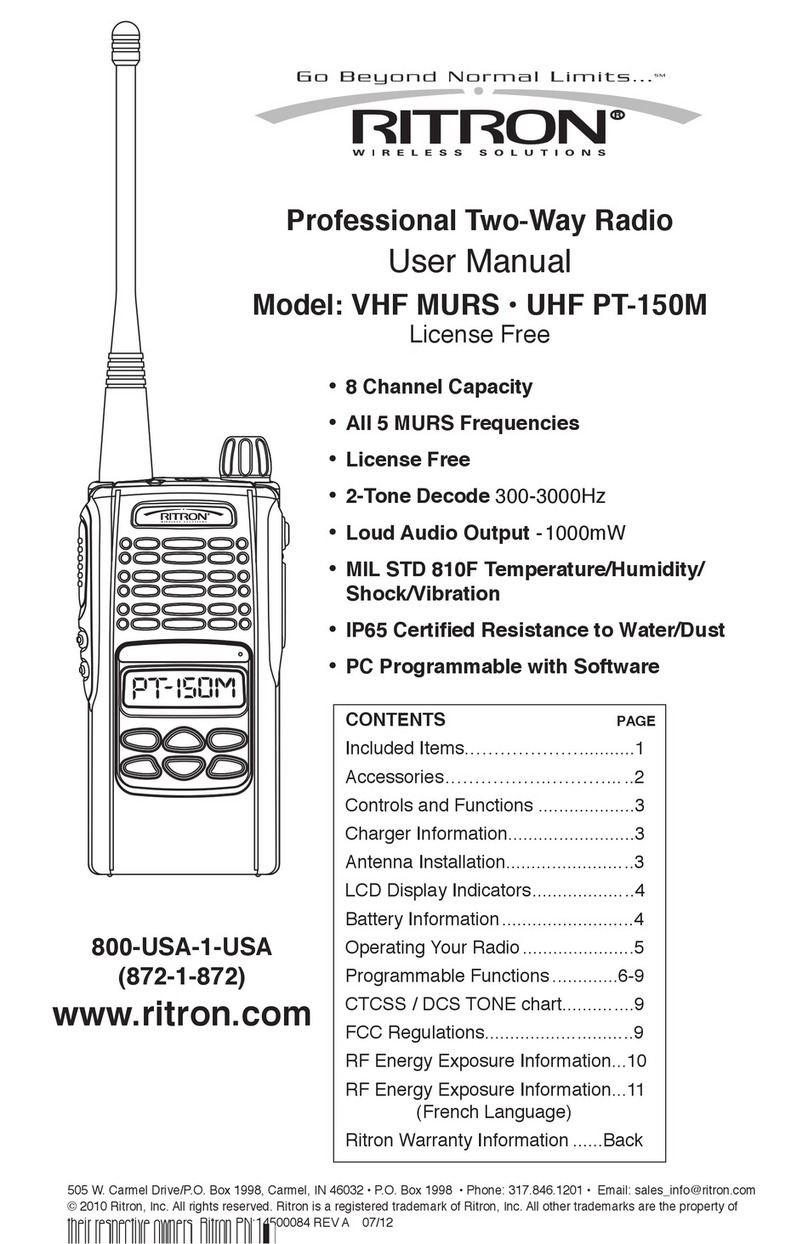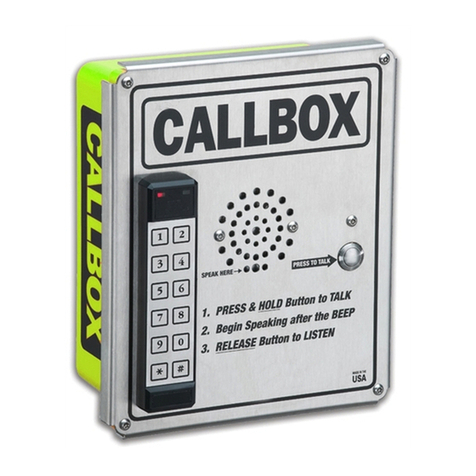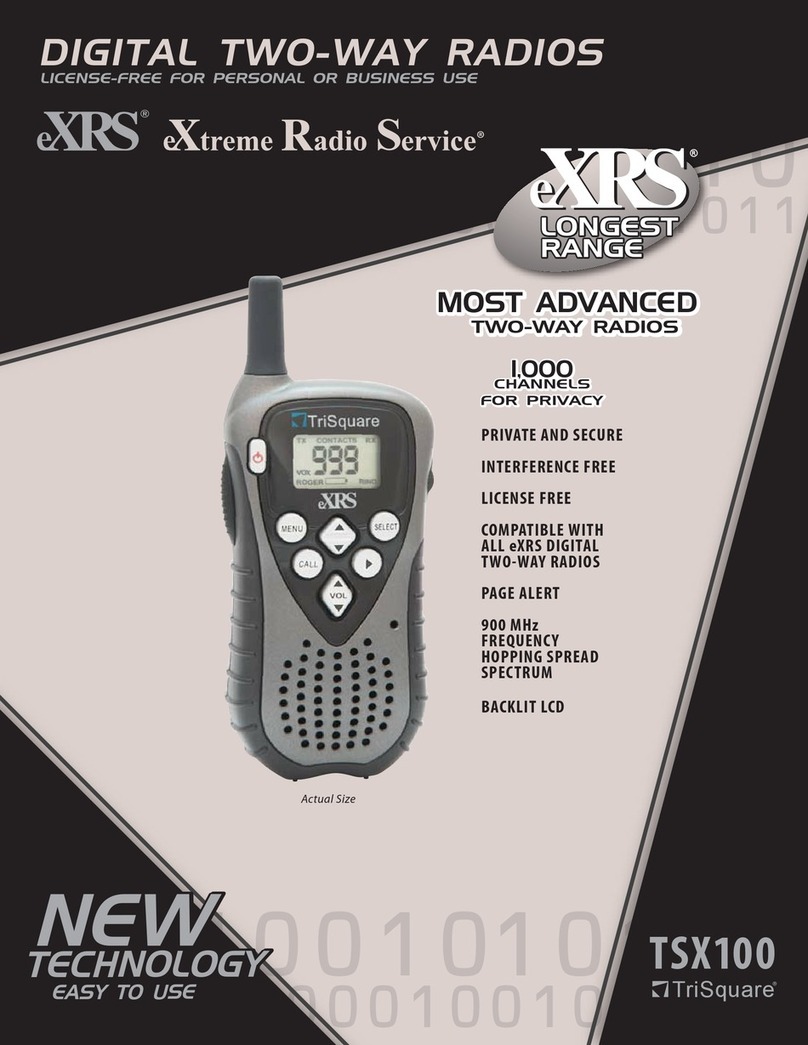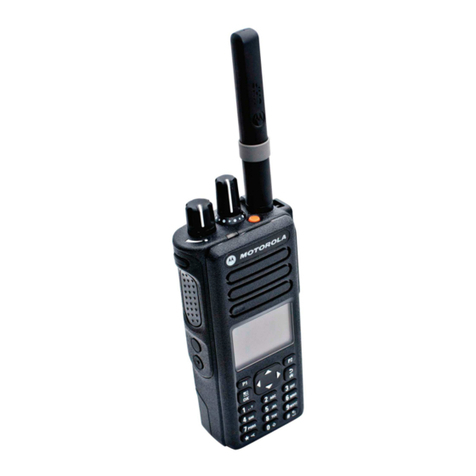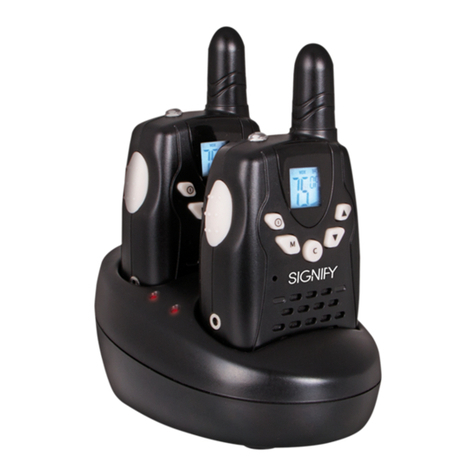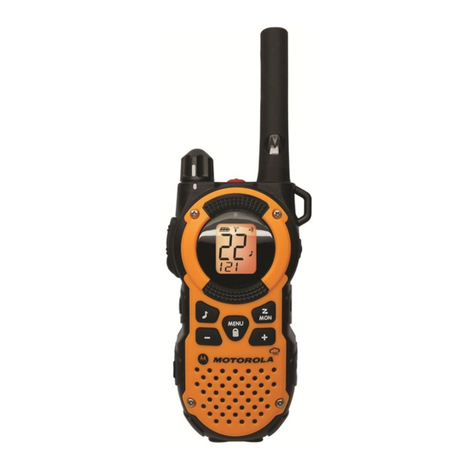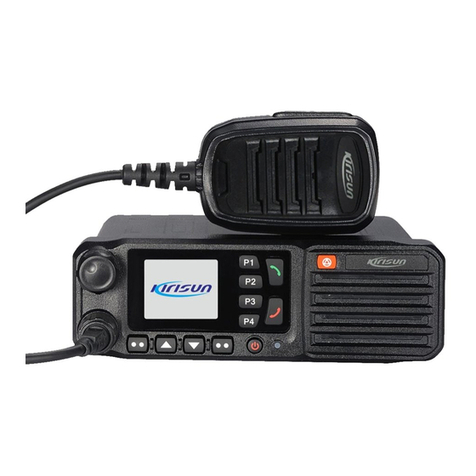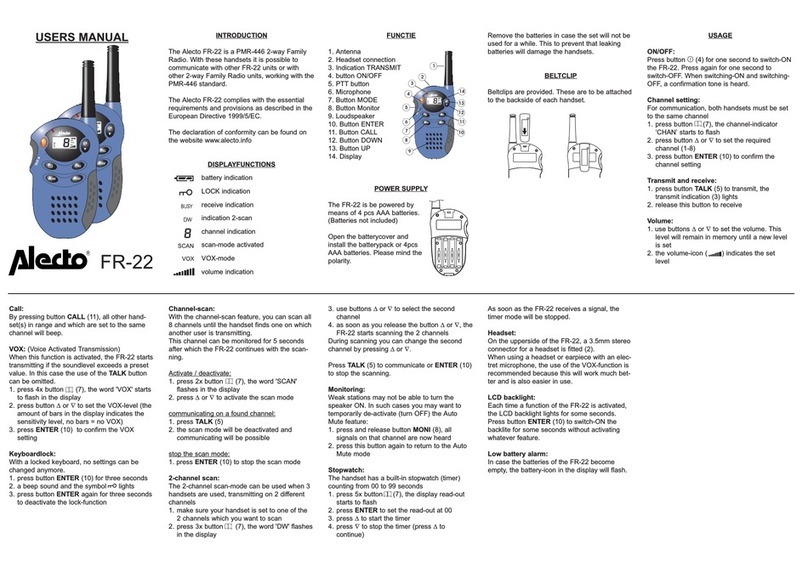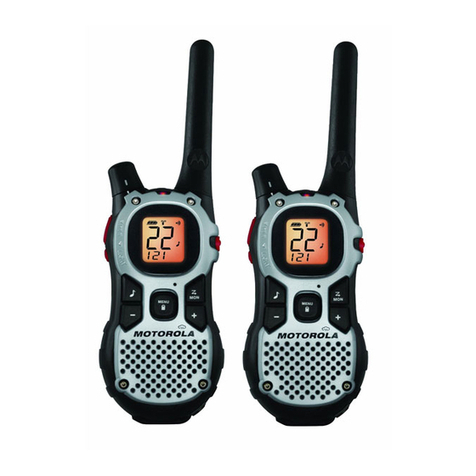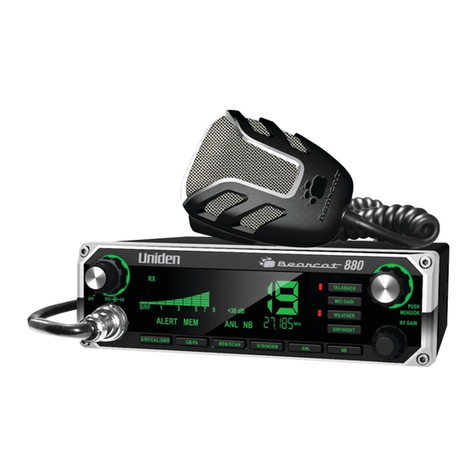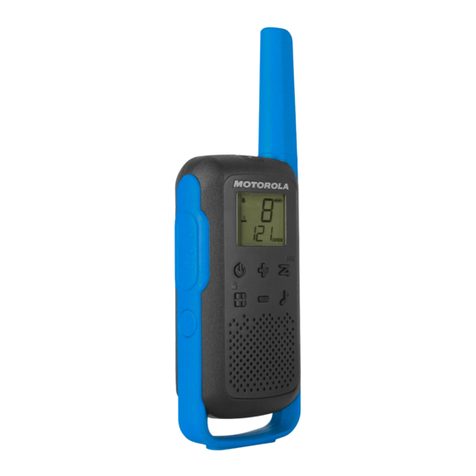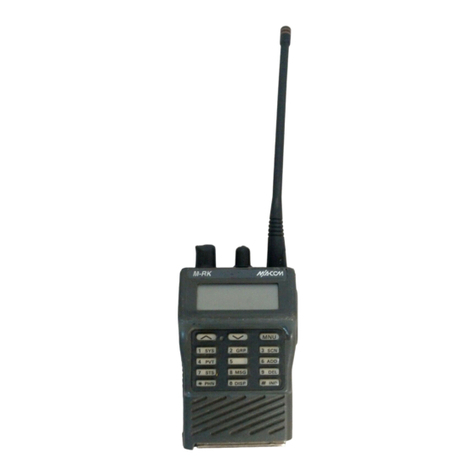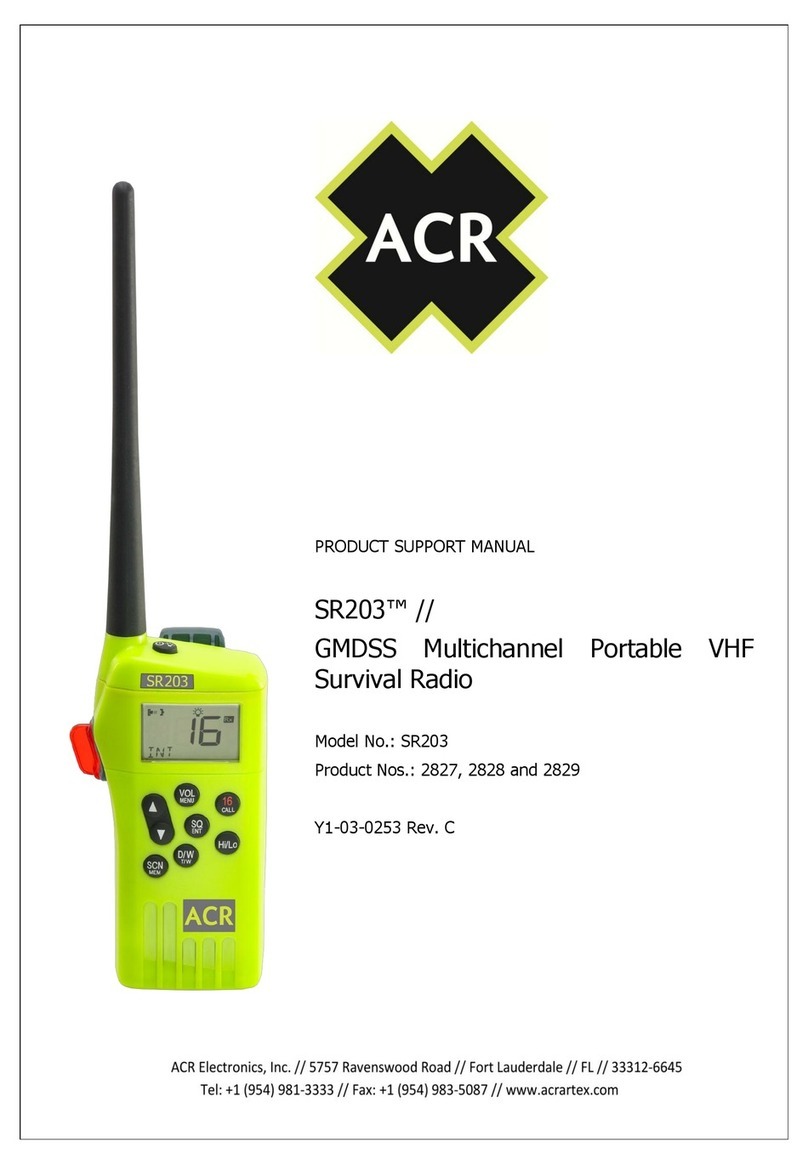
10.
RF ENERGY EXPOSURE AWARENESS AND CONTROL INFORMATION
RF ENERGY EXPOSURE AWARENESS AND CONTROL INFORMATION, AND
OPERATIONAL INSTRUCTIONS FOR FCC OCCUPATIONAL USE REQUIREMENTS
BEFORE USING YOUR PORTABLE 2-WAY RADIO, READ THIS IMPORTANT RF ENERGY AWARENESS AND
CONTROL INFORMATION AND OPERATIONAL INSTRUCTIONS TO ENSURE COMPLIANCE WITH THE FCC’S
RF EXPOSURE GUIDELINES.
NOTICE: This radio is intended for use in occupational/controlled conditions, where users have full knowledge of their exposure
and can exercise control over their exposure to meet FCC limits. This radio device is NOT authorized for general population,
consumer, or any other use.
This 2-way radio uses electromagnetic energy in the radio frequency (RF) spectrum to provide communications between two or
more users over a distance. It uses radio frequency (RF) energy or radio waves to send and receive calls. RF energy is one form
of electromagnetic energy. Other forms include, but are not limited to, electric power, sunlight and x-rays. RF energy, however,
should not be confused with these other forms of electromagnetic energy, which when used improperly can cause biological
damage. Very high levels of x-rays, for example, can damage tissues and genetic material.
Experts in science, engineering, medicine, health and industry work with organizations to develop standards for exposure to RF
energy. These standards provide recommended levels of RF exposure for both workers and the general public. These recom-
mended RF exposure levels include substantial margins of protection. All 2-way radios marketed in North America are designed,
manufactured and tested to ensure they meet government established RF exposure levels. In addition, manufacturers also
recommend specic operating instructions to users of 2-way radios. These instructions are important because they inform users
about RF energy exposure and provide simple procedures on how to control it. Please refer to the following websites for more
information on what RF energy exposure is and how to control your exposure to assure compliance with established RF exposure limits.
http://www.fcc.gov/oet/rfsafety/rf-faqs.html http://www.fcc.gov/oet/rfsafety/rf-faqs.html
http://www.osha.gov/SLTC/radiofrequencyradiation/index.html
http://www.osha.gov/SLTC/radiofrequencyradiation/index.html
FEDERAL COMMUNICATIONS COMMISSION REGULATIONS -The FCC rules require manufacturers to comply with the FCC
RF energy exposure limits for portable 2-way radios before they can be marketed in the U.S. When 2-way radios are used as a
consequence of employment, the FCC requires users to be fully aware of and able to control their exposure to meet occupational
requirements. Exposure awareness can be facilitated by the use of a product label directing users to specic user awareness
information. Your Ritron PT Series 2-way radio has an RF exposure product label. Also, this user manual includes information
and operating instructions required to control your RF exposure and to satisfy compliance requirements.
COMPLIANCE WITH RF EXPOSURE STANDARDS -Your Ritron 2-way radio is designed and tested to comply with a number
of national and international standards and guidelines (listed below) for human exposure to radio frequency electromagnetic
energy. This radio complies with the IEEE and ICNIRP exposure limits for occupational/controlled RF exposure environment at
operating duty factors of up to 50% transmitting and is authorized by the FCC for occupational use only. In terms of measuring
RF energy for compliance with the FCC exposure guidelines, your radio radiates measurable RF energy only while it is transmit-
ting (during talking), not when it is receiving (listening) or in standby mode.
NOTE: The approved batteries supplied with this radio are rated for a 5-5-90 duty factor (5% talk - 5% listen - 90% standby),
even though this radio complies with the FCC occupational RF exposure limits and may operate at duty factors of up to 50% talk.
Have questions? Call 800-USA-I-USA (800-872-1872) or visit our website at www.ritron.com
Your Ritron 2-way radio complies with the following RF energy exposure standards and guidelines:
• United States Federal Communications Commission, Code of Federal Regulations; 47 CFR JJ 1.1307,
1.1310, 2.1091 and 2.1093
• American National Standards Institute (ANSI)/Institute of Electrical and Electronic Engineers (IEEE) C95.3-2003
• Institute of Electrical and Electronic Engineers (IEEE) C95.3 2003Edition
RF EXPOSURE COMPLIANCE AND CONTROL GUIDELINES AND OPERATING INSTRUCTIONS -To control your
exposure and ensure compliance with the occupational/controlled environment exposure limits always adhere to the
followingprocedures.
GUIDELINES:
• Do not remove the RF Exposure Label from the device.
• This user manual should accompany device when transferred to other users.
• Do not use this device if the operational requirements described herein are not met.
OPERATING INSTRUCTIONS:
• Transmit no more than the rated duty factor of 50% of the time. To transmit (talk), push the Push-To-Talk (PTT) button.
To receive calls, release the PTT button. Transmitting 50%
of the time, or less, is important because this radio generates measurable RF energy exposure only when transmitting
(in terms of measuring for standards compliance).
• Hold the radio in a vertical position in front of face with the microphone (and the other parts of the radio, including
the antenna) at least one inch (2.5 cm) away from the nose. Keeping the radio at the proper distance is important
because RF exposures decrease with distance from the antenna. Antenna should be kept away from eyes.
• When worn on the body, always place the radio in a Ritron approved clip, holder, holster, case, or body harness
for this product. Using approved body-worn accessories is important because the use of other manufacturers’
non- approved accessories may result in exposure levels, which exceed the FCC’s occupational / controlled
environment RF exposure limits.
• If you are not using a body-worn accessory and are not using the radio in the intended use position in front of the face,
then ensure the antenna and the radio are kept at least 2.5 cm (one inch) from the body when transmitting. Keeping the
radio at the proper distance is important because RF exposures decrease with increasing distance from the antenna.
• Use only Ritron approved supplied or replacement antennas, batteries, and accessories. Use of non-Ritron approved
antennas, batteries, and accessories may exceed the FCC RF exposure guidelines.
• For a list of Ritron approved accessories see this user manual, or visit http://www.ritron.com http://www.ritron.com,
or call Ritron at 800-872-1872.
CONTACT INFORMATION
For additional information on exposure requirements or other information, contact Ritron at 800-872-1872.
Have questions? Call 800-USA-I-USA (800-872-1872) or visit our website at http://www.ritron.com












